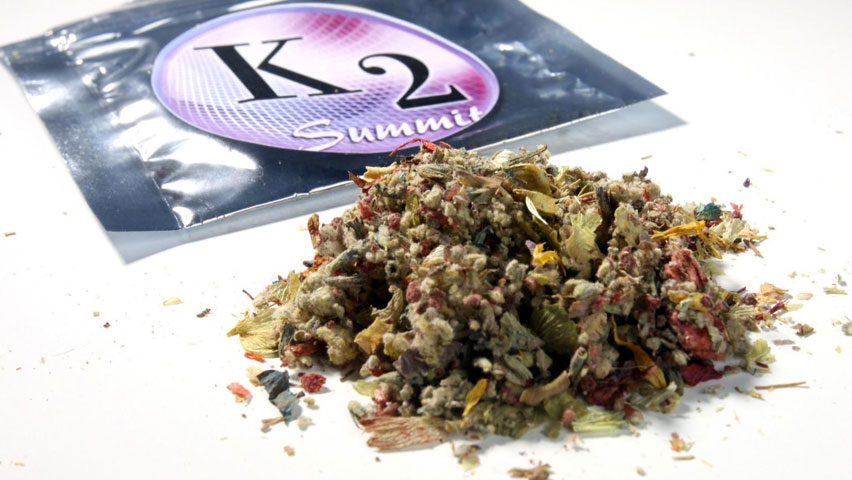
K2 and Spice are common street names for synthetic marijuana, produced by combining artificial cannabinoids with traditionally used medicinal herbs and other legal substances. These products are often sold under the categories of bath salts, herbal incense, and plant food to avoid enforcement control efforts. Over 500 formulations of synthetic marijuana exist, as manufacturers come up with new variations to avoid bans by law enforcement and legislative actions. Synthetic marijuana is considered by many experts to be a misnomer. Although the synthetic pot when smoked can produce marijuana-like highs, the chemical structures of the synthetics and natural cannabinoids are very different and the effects can be unpredictable. Media reports and some studies suggest that use can lead to triggering of psychotic disorders among vulnerable individuals . Media stories reflect the growing use of these substances and the possible dangers. Colorado emergency rooms reported in 2013 a wave of over 200 overdoses and 3 deaths in a one month period. Police have reported violent behaviors associated with psychotic breaks attributed to synthetic pot use. Some cases appear to have resulted in brain damage and strokes in users.
Abuse and Detection
Synthetic cannabinoids are not detected by traditional tests for marijuana use. A special test must be used and constant updates are necessary to keep up with changes in formulations.
Common street names:
K2, Spice Black Mamba, Bombay Blue, Fake Weed, Genie, Zohai, Bliss, Blaze, JWH -018, -073, -250, Yucatan Fire, Skunk, and Moon Rocks
Symptoms of Abuse:
Similar to marijuana in many cases Loud talking and bursts of laughter in early stages Sleepy or lethargy in later stages Lack of coordination Forgetfulness in conversation Reddened eyes Misjudgment of passage of time
Testing Medium:
Urine
Medical Dangers (including withdrawal effects):
Increase in blood pressure and heart rate, confusion, seizures, extreme anxiety, paranoia, panic attacks, hallucinations, psychotic episodes, brain damage, blindness, inability to speak, paralysis, coma, death
Window of Detection
Up to 72 hours

